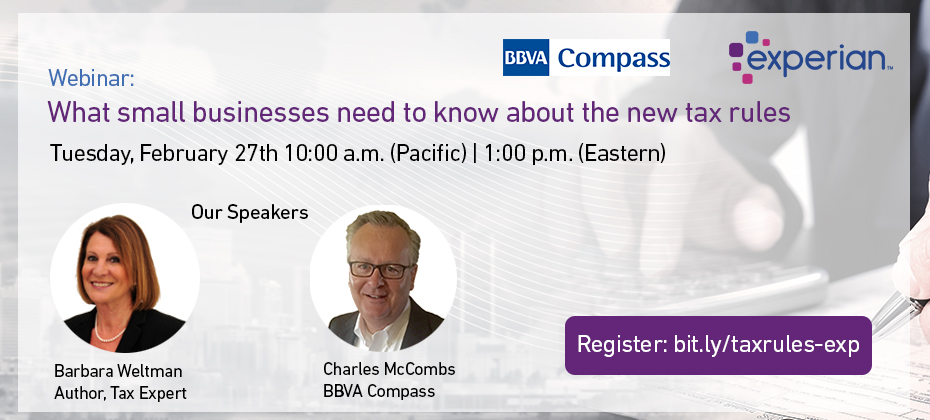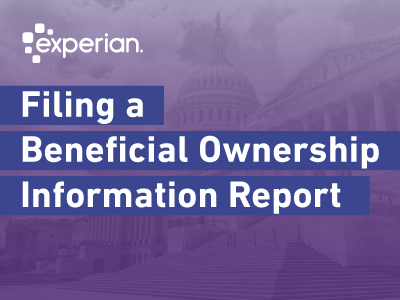This blog post about the new tax law and the tax cuts and jobs act of 2017 was prepared by author and tax expert, Barbara Weltman for the Small Business Matters Blog. You can find more blogs by Barbara on her Big Ideas for Small Business blog.
With the Tax Cuts and Jobs Act of 2017 making dramatic changes in many tax rules, business owners should be asking themselves how to plan for the future. What do the changes mean for the short term and for the long term? Here are some planning strategies to consider in light of the new law.
Revisiting your entity choice
The spectacular cut in the tax rate on C corporations from a high of 35% to a flat 21% rate may leave many small business owners, most of whom operate as pass-through entities, wondering if they should become C corporations. Should an S corporation terminate its election to be taxed as a pass-through entity and instead be taxed as a regular corporation subject to the 21% rate? Should a partnership or limited liability company incorporate to become a C corporation?
These are great questions and there’s no one right answer for all businesses. Pass-through entities have a special 20% tax deduction that will effectively reduce the tax rate that owner’s pay on their share of business income. And all of the tax rates for individuals have also been reduced. So owners of pass-throughs may see tax reduction. But this 20% write-off is temporary, running from 2018 through 2025. And not all owners will be able to take some or all of the deduction because of various limitations in the law based on taxable income, whether the company is in a specified service, and other factors.
Becoming a C corporation has some tax drawbacks. The key one is double taxation, which means that profits are taxed to the corporation and owners pay tax on the same profits when they’re distributed as dividends that are not deductible by the corporation. Bottom line: Changing your entity choice is a decision that affects the long term and shouldn’t be done hastily. Be sure to also weigh the implications of any entity change on state income taxes. Talk with your CPA, attorney, or other advisor about the best strategy for your situation.
Reinvesting tax savings in your staff
Whatever your form of entity, tax changes may mean lower taxes on your profits. This gives you more cash to reinvest in your employees. At the time of this blog, nearly 200 publicly-held corporations announced their reinvestments in the form of bonuses, pay increases, higher employer 401(k) contributions, funding for employee education, and hiring more employees.
As a small business in this ever-tightening job market, it’s essential to address the need to enhance your payroll expenditures to attract and retain valued employees, especially in light of what larger firms are doing.
Think about:
• Raising pay. Many localities are raising the minimum wage, and you can stay ahead of the curve by increasing pay before the law requires and before your competitors do.
• Paying for employee medical coverage (or increasing your share of this cost). If you pay at least half the cost of coverage purchased through a Small Business Health Options Program (SHOP), you may be eligible for a tax credit to defray some of your costs. Alternatively, if you aren’t subject to the employer mandate under the Affordable Care Act, you can use a special plan called a qualified small employer health reimbursement arrangement (QSEHRA) where employees obtain their own personal coverage. You reimburse their premiums (up to set limits) and you deduct your cost, but employees aren’t taxed on this benefit.
• Paying for family and medical leave. If you give employees time off (whether or not required by law to do so) and pay them at least 50%of their pre-leave wages, you may qualify for a new tax credit. But the credit only applies for 2018 and 2019, and only for an employee earning no more than $72,000.
• Adding a qualified retirement plan or increasing employer contributions to existing ones. Employer contributions are tax deductible. For new plans, you may also be eligible for a tax credit to cover administrative costs and employee education for the first three years of the plan.
• Offering ownership in your company. Giving employees a stake in the business rewards loyalty and helps retain workers. If you’re incorporated, this can be done through a tax-favored employee stock ownership plan (ESOP).
Upgrading and revamping your equipment and facilities
The new law made highly-favorable changes in how you can write off the cost of newly acquired equipment and renovations to facilities. These rules apply even if you borrow to pay for some or all of the expenditures.
• Equipment. Essentially, whatever you buy—new office furniture, special machinery, computers and tablets—you’ll be able to write off the entire cost immediately. The Section 179 (first-year expensing) deduction is up to $1 million in 2018 (although businesses must be profitable to use it now and phases out for purchases totaling more than $2.5 million). Bonus depreciation allows for a deduction of 100%of cost, and now applies to both new and pre-owned property. But keep in mind that bonus depreciation is temporary; it phases out after 2022 and ends after 2026.
• Vehicles. If you buy a new or pre-owned car, light truck, or van, changes to write-off rules allow for greater deductions. For example, $18,000 of the cost of a so-called “luxury” business car (weighing 6,000 pounds or less) placed in service in 2018 can be deducted in the first year. Dollar limits on annual deductions after the first year have also been increased as compared with limits for 2017. And for heavy SUVs (weighing more than 6,000 pounds) that are not subject to these dollar limits, most or all of the cost can be deducted immediately through a combination of write-off rules.
• Facilities. If you want to renovate your premises, instead of having to depreciate the cost over 39 years, you may be able to deduct “qualified improvement property” ratably over 15 years. Qualified improvement property is an improvement to the interior of commercial property, other than an elevator or escalator.
Bottom line
The new tax law presents a number of opportunities for businesses to take actions that will enhance business operations while producing favorable tax results. But there are many moving parts to the decisions on what action to take and when. Again, be sure to discuss your personal situation with a CPA or other advisor.
Want to learn more?
Come to our special webinar “What Small Businesses Need to Know about the New Tax Rules” taking place on Tuesday, February 27th, 10:00 (Pacific), 1:00 (Eastern.) Barbara Weltman will be going more in-debth on the new tax rules, and Charles McCombs from BBVA Compass will be speaking about equipment financing. It promises to be a very informative session.



